Romania, one of the most fascinating countries in Europe with nice and friendly people and beautiful landscapes. A short trip is all you need to pack in a little taste of Romania, but with such an effusion of history, legends, mysteries, culture, and traditions to explore your stay might be extended.
Transylvania: rural Romania at its most seductive, one of the most bucolic places in Europe. Visit the unspoiled landscapes and serenity of Transylvania with its well-known Saxon fortified villages and medieval citadels, such as Sighisoara, Sibiu and Brasov, all well worth a visit.
Pass through the Romanian villages, catch a glimpse of Romania’s rural way of life and feel a genuine medieval time warp.
You will be impressed by the Carpathian Mountains hosting its famous castels and fortresses among which Bran Castle (Dracula’s Castle) and Peles Castle (former residence of the Romanian Kings) are only some of Romania’s treasures.
And one must not forget the Danube, one of our continent’s mightiest rivers which, when flowing into the Black Sea, is making Europe one of the most wonderful natural gifts: the Danube Delta.
All in all it will feel good to forget about the modern-life pace/rhythm and breathe some clean air.

Day 1
Bucharest
Group pick up from "Henri Coanda" Airport, Bucharest.
Bucharest’s first document was issued in 1459 by the Walachian Prince Vlad Ţepeş, known as Dracula.
Short city tour of Bucharest, with the visit of the Old Town (attractions in the Lipscani/Historical Centre: Manuc's Inn, the ruins of the Old Court), Victoriei Boulevard with the Romanian Athenaeum - the capital’s cultural landmark, the Royal Palace, the Cantacuzino Palace, Kretzulescu church.
Bucharest's wide range of cultural scenes includes a vibrant nightlife and excellent performing arts shows, all bound to delight the tourists.
Welcome dinner in a beautiful historic restaurant: The Beer Wagon (Caru’ cu Bere)
Accommodation in Bucharest
Day 2
Bucharest - Curtea de Arges - Sibiu
Transfer from Bucharest to Sibiu, former European Capital of Culture, passing through the Olt river valley.
On the way, visit of Curtea de Arges Monastery, a legendary place, one of the oldest historical traditional art monument in Romania, built in the XVth century by the Walachian ruler Neagoe Basarab. The legend says that Manole, the master mason, built his wife alive in the walls... so it will last for eternity. Queen Mary of Romania, the most beloved and mysterious Romanian queen, is buried next to her husband, Ferdinand I of Romania, in this beautiful monastery.
In the afternoon, tour of the medieval centre of Sibiu, one of Romania’s most handsome cities, with its three main squares: the Large Square with Brukenthal Palace, Haller House, the Catholic Church and the Council Tower – one of the city’s landmarks; the Small Square with Luxembourg House, the Liars’ Bridge, the House of Arts; Huet Square with the Evangelical Church – hosting a 67 tombstones gallery (unique in Romania), one of it belonging to the son of Vlad the Impaler (Dracula): Mihnea the Bad, who was killed on the steps of this church; the Fortress Street.
The Liars’ Bridge (built initially in 1771 out of wood and rebuilt in 1859 using cast iron) legend states that if you told a lie the bridge would collapse.
Sibiu is one of Romania's cultural and touristic main cities, attracting tourists due to its wonderful medieval charm, well preserved architecture monuments, beautiful landscapes in the Sibiu outskirts, great food, friendly people, and displaying the features of its multi-ethnic heritage: Romanian, Saxon, Hungarian. The city and the region contains the largest German/Saxon community in Romania.
Dinner and accommodation in Sibiu
*Optional - “A Taste of the Romanian Authentic Gastronomy”: dinner with Romanian cuisine & folk show in a rural pension, in Sibiel, a village where the traditions are still alive (22 km far from Sibiu) – visit of the Glass Icons Museum, unique in Europe, over 700 exhibits
Curtea de Arges Monastery
Day 3
Sibiu - Sighisoara - Cluj-Napoca
Transfer to Sighisoara, UNESCO World Heritage Site listed, a small medieval city in the heart of Transylvania.
Visit of the well preserved fortified site: the Stag House, the Clock Tower, the Church on the Hill, the Venetian House, the Covered Stairs, Vlad Tepes/Dracula’s birthouse – a mysterious place where the real bloody legend of Vlad the Impaler began, continued by Bram Stoker’s character – Count Dracula.
Sighisoara (Schässburg in German) is one of the most visited cities in Transylvania, and offers an outstanding testimony of the local Saxons culture.
Next stop – Cluj-Napoca, former capital of Transylvania, today one of Romania’s most vibrant and dynamic cities. Due to its 11 active universities and the 100.000 young people (mainly students) the city is considered one of the best places to study & party.
In 2015 Cluj-Napoca, "Transylvania's Heart” will host the “European Youth Capital” agenda of activities & events.
Cluj-Napoca city tour with the visit of St Michael's Gothic church, the Franciscan Church, the Museum Square, the Unirii (Union) Square.
Dinner and accommodation in Cluj-Napoca
Day 4
Cluj Napoca - Turda - Sighetu Marmatiei
Visit of the Turda Salt Mine, one of the oldest and most important salt mines extraction, an activity with old tradition in Transylvania, dating from the XVIIth century; displaying for the tourists old shafts, health and recreational facilities.
Turda Salt Mine (Salina) is an exquisite example of a salt mine transformation into a special facility with a modern approach, a spellbinding place considered ”the coolest underground place in the world”, and also on the 22nd place of the unbelievable travel destinations in the world [Source: “Business Insider”]
Visit of the UNESCO-listed Desesti wooden church, one of the best preserved typical tall wooden churches in Maramures, XVIIIth century dated.
Dinner and accommodation in Sighetu Marmatiei
Day 5
Sighetu Marmatiei – Sapinta - Barsana - Suceava
Leaving Sighetu Marmatiei, a small town in northern Romania hosting the impressive Memorial for the Communism and Resistance Victims; Transfer to Sapinta, a traditional Romanian village in Maramures county where death is not taken seriously. Visit of the original Merry Cemetery. Famous for its colourful wooden tombstones, depicting episodes of the villagers lives in a naïve manner, the Merry Cemetery represents a genuine chronicle of the rural life.
Passing through the picturesque Iza Valley, well worth visiting for the beautiful landscapes and villages.
Visit of the Barsana (Romanian for Shepherd) wooden church, one of the eight Maramures churches protected by the UNESCO World Heritage list, where you can soak in the tranquility of the site.
The tour continues by leaving Maramures and entering the Bukovina region, with scenic villages, traditional workshops and the famous painted monasteries.
Dinner and accommodation in Suceava
Merry Cemetery, Sapinta, Maramures
Day 6
Suceava - Voronet - Marginea - Suceava
One day dedicated to the beautiful Bukovina region.
Leaving Suceava (former capital of Moldavia during Stefan the Great’s reign), visit of the Voronet church, famous for its stunning XVth - XVIthcentury vivid blue exterior frescoes and the painted Humor monastery, one of the first painted Moldavian monasteries in the XVth century, small but shining bright among Bukovina’s treasures and, along with Voronet, probably the best preserved.
Visit of a traditional pottery workshop in Marginea, a small village preserving a unique and beautiful tradition of producing black ceramics, craftsmanship dating from the XVth century.
Dinner and accommodation in Suceava
Day 7
Suceava - Piatra Neamt - Brasov
Departure from Suceava, transfer to Piatra Neamt, a “green urban island” near the mountains; pass through the spectacular Bicaz Gorges, a narrow path carved into the sheer rocks, one of Romania’s most spectacular roads.
Optional, en route visit of the Neamt fortress, a XIVth century important medieval monument, and Agapia Monastery, an Orthodox nunnery built in the XVIIth century, with its beautiful inside frescoes, created by Nicolae Grigorescu, one of the founders of modern Romanian painting.
Transfer from Moldavia to Brasov, Transylvania.
Brasov (Kronstadt in German, “Crown City”) is surrounded on three sides by the mountains and was founded by the Teutonic Knights in 1211 on an ancient Dacian (Romanian ancestors) site.
It is a remarkable city which hosts Gothic, Baroque, Renaissance architecture, as well as other historical attractions. The marks of the Saxon heritage, are well preserved mainly in the Old Town.
Short city tour with the visit of the City Council Square, the Black Church (Brasov’s landmark, over 500 years old, the largest Gothic church in SE Europe, hosts one of the greatest pipe organs in Europe), Ecaterina's gate, (a fairy-looking medieval tower, part of the last preserved original city gates).
Dinner and accommodation in Brasov/Poiana Brasov
Day 8
Brasov - Sinaia - Bran - Brasov
Transfer to Sinaia mountain resort, the ”Pearl of the Carpathians”.
Visit of the legendary Peles Castle - built like a fairy tale castle, in German Renaissance style, and surrounded by the majestic Carpathian Mts, former residence of Romania's Kings. Built by King Carol I of Romania, (born Prince Karl of Hohenzollern-Sigmaringen dynasty) as his summer residence, Peles Castle shelters a huge collection of works of art, rare furniture, weapons collections, valuable books, and over 2.000 paintings in its 160 rooms.
Lunch & wine tasting (sparkling wines produced using the traditional method) in the "Rhein Azuga" wine cellars, the former supplier of the Romanian Royal Court.
In the afternoon - visit of the Bran Castle, better known as Dracula’s Castle. The medieval stronghold perched on rocks high above the valley was built in the XIVth century, in order to protect the peasants and landowners at the border between the two historical provinces: Walachia and Transylvania. Its mysteries are not all revealed: either the ones surrounding the controversial personality of the real Prince Vlad Tepes/Dracula, or the ones regarding Queen Mary of Romania’s heart covered with a double-faced flag (on one side the Romanian flag, on the other side the English flag) kept in a silver box who temporarily found its peace nearby Bran Castle.
Traditional dinner and accommodation in Brasov/Poiana Brasov
Day 9
Brasov - Tulcea - Danube Delta
Transfer from Brasov in the Dobrogea region (situated between the Danube river and the Black Sea) to Tulcea, an important and ancient harbour, with Byzantine, Genovese, and Ottoman influences, considered to be the entry gate in the Danube Delta.
Leaving Tulcea you will be guided to the selected hotel (by bus/car/boat) in the Danube Delta.
Danube Delta, a World Cultural and Natural Heritage site, a UNESCO protected area is one of Romania’s leading tourism attractions and offers a completely different experience, compared with other European regions, for its travelers. The Danube Delta has the third largest biodiversity in the world and offers a sanctuary for birds, fish, and animals. This natural reservation hosts the largest wetlands in Europe, its unspoiled backwaters host 45 freshwater fish species and 300 migratory & year-round birds, a density unmatched anywhere else in the world, a birdwatchers’ paradise.
Each traveler will have the opportunity to enjoy the tours organized in the Danube Delta: fishing expeditions, bird watching, itinerant tourism, discovery tourism, specialized trips, scientific trips, youth programs tourism, rural tourism, ecotourism, rest & relax tourism, kayak tours.
Dinner and accommodation
* Optional: en route short stop in Ploiesti (in the mid XIXth century the Ploiești region was one of the world's leading oil extraction and refinery sites), and visit of the Clock Museum, sheltering valuable exhibits from the XVIth century till nowadays.
Day 10
Danube Delta
Danube Delta: a special place, Europe’s premier wetlands and best preserved delta is sheltering spectacular wildlife highlights, has been declared a World Cultural & Natural Heritage site and a UNESCO protected area and is one of Romania’s leading attractions.
One full day dedicated to the Danube Delta, includes a 3-4 hours boating on the waterways, and lakes.
The Danube Delta, a sanctuary for birds, fish, and animals, is the third largest biodiversity in the world (over 5,500 flora & fauna species) spreading over 5,050 km2 of marshes, canals, reed islets and lakes.
The Danube Delta shows the well preserved spirit of the locals (“lipoveni”), with the specific fisheries (“cherhanale”) and houses covered with reed roofs, and their traditions: fishing, bees-keeping, gardening and cattle raising, craftsmanship.
The local gastronomy will charm the tourists with the original fish dishes (fish broth, stuffed fish, brines, fish meatballs, fish egg/roe salad, seafood – the best in Romania).
Dinner and accommodation
Day 11
Danube Delta - Bucharest
Transfer from Danube Delta to Bucharest.
Bucharest: visit of the Palace of Parliament, a place full of superlatives: world’s largest civilian building, most expensive administrative building and world’s heaviest building (last entry 15:45).
The Palace of Parliament was designed and its construction started in 1984, during the Ceausescu’s communist regime. Its enormous rooms, halls and galleries are richly decorated with sculptures, golden plasters, intricate ceilings artworks, opulent tapestries and huge carpets, altogether aiming to overwhelm the visitors.
Farewell dinner and accommodation in Bucharest
Day 12
Transfer to "Henri Coanda" Airport, Bucharest.
Goodbye Romania !
 Authentic Romania
Authentic Romania Our Specials
Our Specials City Breaks
City Breaks





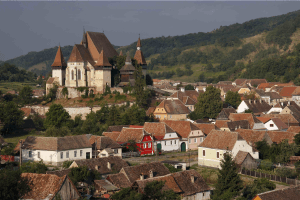
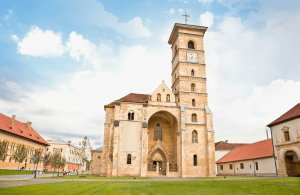
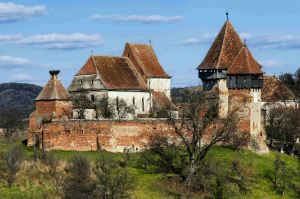
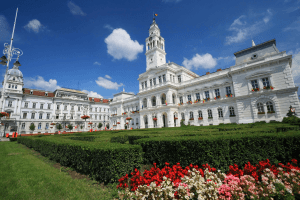
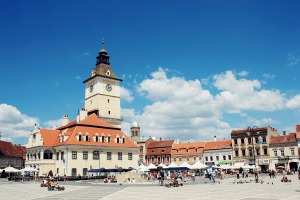
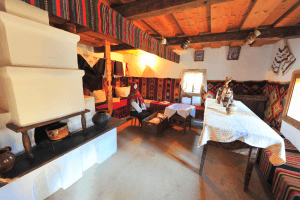
.png)
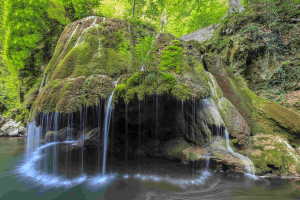
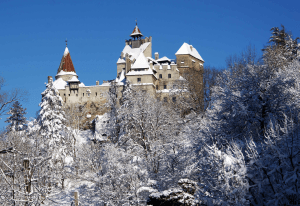

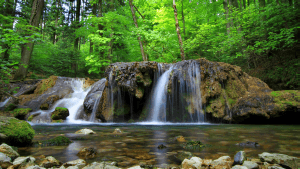
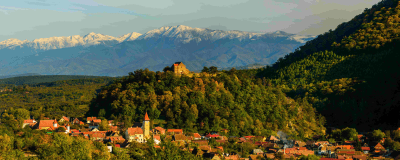
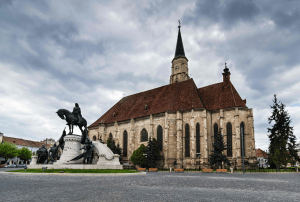
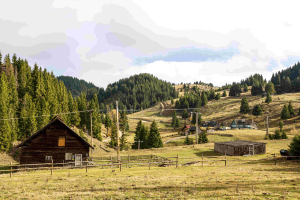
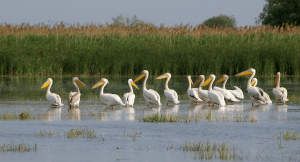
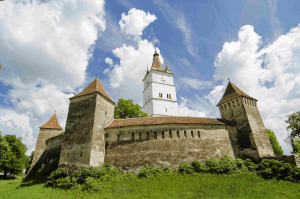
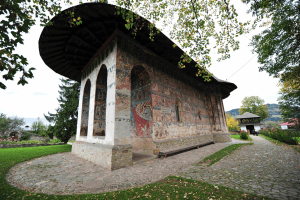
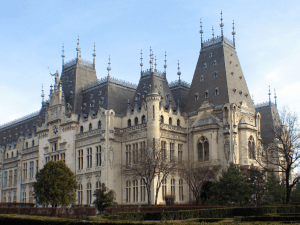
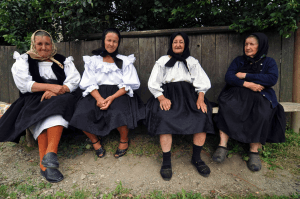
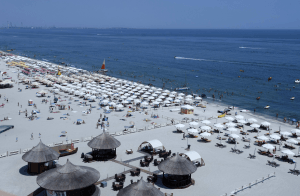
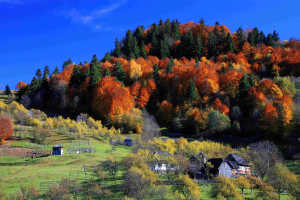
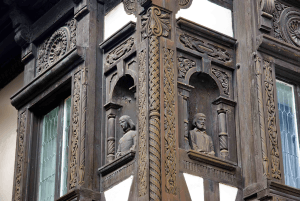
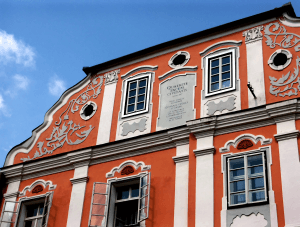
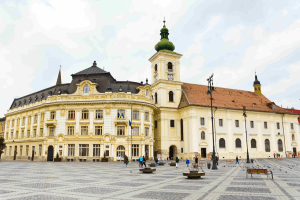




































































Add a comment